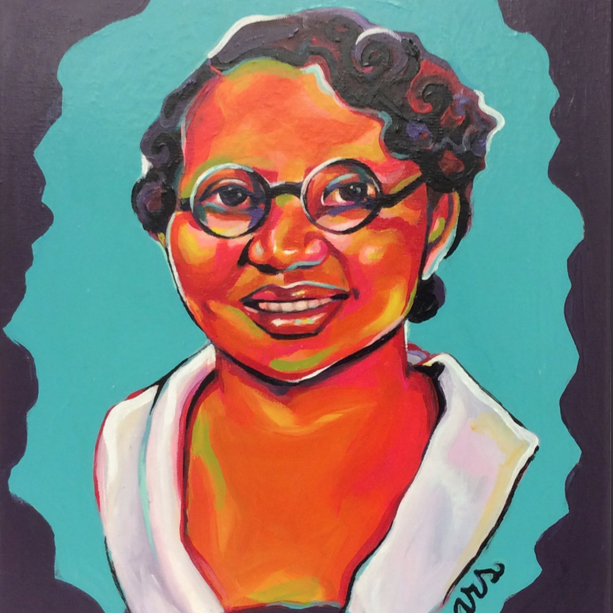The Bloomington Herald-Times
By Michael Reschke
Ashley Smith hoped the hard work she put into her portrait of Carrie Parker Taylor, Indiana University’s first black female student, was evident. The applause from the crowd should have confirmed as much, but Taylor’s oldest granddaughter made sure Smith knew what she thought.
“I like it,” said Carolyn Outlaw. “That has granny’s smile.”
The painting will occupy a permanent spot in the “Women of Indiana University” art exhibit in the East Lounge of the Indiana Memorial Union, securing her place among some of IU’s other female trailblazers, such as the late Elinor Ostrom, the first woman to receive the Nobel Memorial Prize in Economic Sciences. More than 60 people gathered in the lounge Monday afternoon to see the portrait revealed. During the ceremony, Director of IU Archives Dina Kellams explained that while Taylor has been a part of IU history for more than a century, she had been largely forgotten until recently.
In the summer of 2015, Kellams was looking for an article about an old IU athletics field when she stumbled across a newspaper headline from Jan. 8, 1898, that proclaimed “First negro girl in Indiana University.” Kellams was amazed.
“I’ve been at the archives for more than 15 years and Parker’s name was not familiar to me, nor was it familiar to any of the other staff members,” she said, using the name Taylor had when she enrolled. “It appeared that her Indiana University story had been lost to time.”
Kellams never found the article on the athletics field she was looking for, but she eventually found Taylor’s youngest son, Leon, and another granddaughter, Carol Taylor Fowler. They were aware of Taylor’s story and her struggles, which Kellams shared with the crowd.
Taylor was born Dec. 9, 1878, in Enfield, North Carolina, to former slaves. Wanting their daughter to get an education and thinking she would have an easier time of it in the North, Taylor’s family moved to Clinton, Indiana, when she was still an infant. Getting through school wasn’t without its challenges, as Taylor’s principal repeatedly flunked her in eighth grade to keep her from entering high school. Admiring her persistence, community members finally persuaded the principal to let her continue.
At IU, Taylor took a job cooking and cleaning for a faculty family to pay her way through school. Exhausted after a year, she took what she thought would be a short break from school. Taylor never returned to Bloomington, though, instead marrying and starting a family. As a mother, Taylor was active in religious organizations, helping to found at least two churches, and was a published poet.
“The only thing she couldn’t do, according to her granddaughter Carol, was cook,” Kellams said.
Despite Taylor’s being such an integral part of IU history, Kellams said the most recent record she could find of Taylor’s story was from the 1950s. Taylor seemed to drop off the radar after that.
Learning of Taylor’s story, James Wimbush, IU’s vice president for the Office of the Vice President for Diversity, Equity and Multicultural Affairs, donated $30,000 to establish a scholarship in her name.
That, along with Smith’s portrait of Taylor, will help prevent her story from fading away again. Leon Taylor, who will turn 101 on April 12, said he appreciated what the university had done.
“That portrait is really lovely,” he said.


